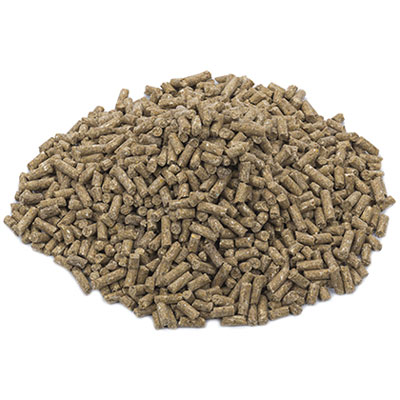Dairy Advice - Spring
Starch
While starch is well-known as a great source of energy, several additional factors make it notable for animal nutrition. Find out some pertinent facts including how it can be effectively used to improve digestive efficiency and reduce urinary nitrogen loss for pasture fed ruminants.
As far as energy sources go, starch is a very speedy and reliable performer. But starch is more than just a fast energy source and could be considered a valuable all-rounder. One of the reasons is its role in driving the vital microbial growth in the rumen; boosting the ability of the bacteria in this fermentation to work their magic and converting pasture and forages into digestible nutrients for the cow.
Starch promotes the bacterial growth and specifically promotes the digestion of cellulose – the fibrous component found in pasture; arguably a very beneficial aspect. Minimum starch levels are therefore required for optimal rumen function.
Where protein, starch and energy meet
Dairy, beef and sheep diets in NZ pastoral systems are generally limited by energy supply to the animals. Energy intake is therefore the key requirement for all growing or lactating stock classes with a primary objective of maintaining or improving productivity levels. Initially this means ensuring sufficient quantity of feed to stock, i.e. are they ‘fully fed?’
However, once bulk feeding levels are addressed, the nutritional focus should shift from mere energy to sufficient energy density; the reason being a strong link between the energy density of feed and animal productivity.
Accordingly, with starch featuring at the top end of the highly concentrated energy spectrum, there’s merit in using it for driving productivity.
But starch also comes to the fore during springtime when NZ pasture contains seasonally abundant protein levels. Given protein percentages that are well above requirements, the cow’s metabolism responds by utilising the excess protein as an energy source. While energy per se is useful, protein-derived energy comes with a downside in the form of increased urinary nitrogen.
However, thankfully there is a relatively easy “fix” for this scenario and it involves starch. The supplementation of a high-protein feed (such as spring pasture) with a highly digestible form of energy (such as starch) essentially helps the rumen operate in a much more efficient manner. It improves protein utilisation and effectively decreases the urinary nitrogen losses.
The benefits can’t be disregarded: from an improvement of milk production and/or weight gain, to a reduction of weight loss during early lactation and a reduction of potential nitrogen leaching – it’s a compelling case for appropriate starch supplementation.
Ready sources of starch
Keep it appropriate

Hi Starch
A fully balanced pellet that provides a range of starches with different break down rates. This makes the starch available in the rumen for longer and creates a more stable and efficient environment.

